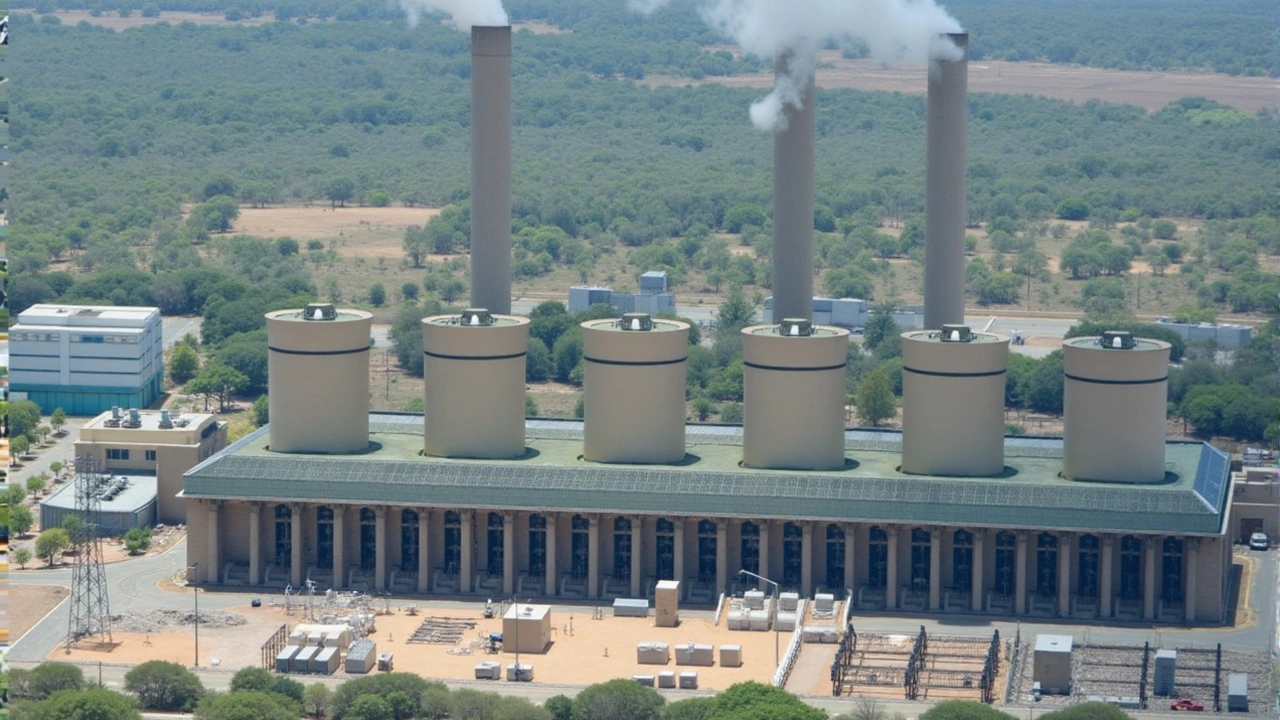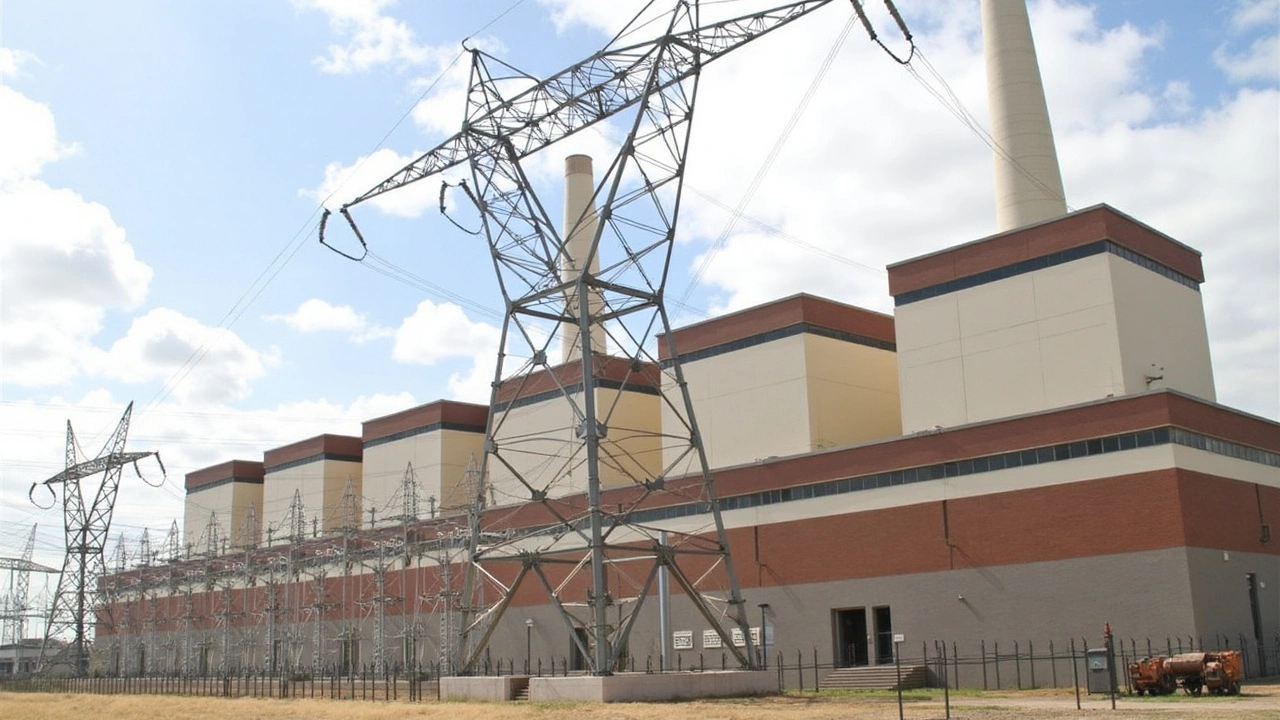Understanding Eskom's Load-Shedding Alert
Recently, South Africa's state-owned electricity supplier, Eskom, issued a stark warning to its customers regarding an impending risk of load-shedding over the upcoming weekend. Following a remarkable 10-month period of uninterrupted power supply, this announcement comes as a significant development. The looming risk of load-shedding, potentially reaching as high as Stage 4, signifies considerable disruptions for both residential and business sectors. In essence, load-shedding involves planned power outages to manage demand and supply fluctuations. Given the context and timing, understanding why these power cuts are on the horizon is crucial.
Eskom’s decision to issue this alert stems from several breakdowns within its power generation fleet. With power plants experiencing malfunctions, extended repair times are inevitable, meaning that Eskom must make strategic choices when distributing the available electricity. Consequently, the utility has fully depleted its emergency reserves, resources traditionally kept on standby to meet urgent demand spikes. The depleted reserves underscore the importance of restoring the balance between supply and consumption to prevent the grid from becoming overly strained.
Breakdowns and Repair Challenges
Navigating the challenges of maintaining an operational energy system, Eskom faces uphill battles. Over the span of merely a week, the utility has contended with a series of breakdowns at critical power stations. This onslaught of technical complications necessitates lengthy repair activities that further put pressure on the company's capability to maintain a steady power output. As Dan Marokane, Eskom's Group Chief Executive, highlighted, this series of events means that emergency reserves, once ripe for contingencies, now sit depleted, further complicating the equation.
Each breakdown within the power stations presents a unique array of challenges. Mechanical failures can vary substantially, requiring specific inputs for repairs. This increases dependency on skilled workers, technical parts, and time – factors that are not always immediately available. As a direct consequence, restoring power full-time to all areas affected can take a considerable amount of time, causing inconveniences for millions who rely on these power sources for everyday activities. The pressure mounts with each passing hour where technicians race against the clock to perform restorations before customer patience wears thin and economic activities grind to a halt.

Tariff Hike Adds to Consumer Concerns
Coinciding with Eskom’s warnings of immediate load-shedding is another announcement likely to rattle consumers: a hike in tariffs. On Thursday, energy regulator Nersa approved an increment of 12.7% in electricity tariffs across the board. The timing of this tariff hike places additional pressure on users who are already bracing for possible outages. It carries implications for businesses assessing operational costs and households mindful of budgeting constraints in a world where energy remains an essential service.
The justification for the tariff increase revolves around rising operational costs and the necessity for investment in maintaining South Africa’s outdated electricity infrastructure. However, this scenario adds layers of complexity to an already dire situation, bringing about concerns over affordability, especially among lower-income households. Addressing these concerns while simultaneously restoring reliable electricity service remains one of Eskom’s top priorities.
Looking Ahead: Eskom's Response and Planning
In response to the issues at hand, Eskom plans to convene an urgent briefing on Friday afternoon. The purpose of this meeting will be to provide comprehensive insights into the current status of power generation and the anticipatory measures slated for the near future. Updates on repair progress, estimated completion times, and technical strategies are among the expected points of discussion. Moreover, Eskom executives aim to outline a roadmap for stakeholder collaboration, focusing on meeting the critical needs of both their immediate consumers and the broader economic landscape propagating throughout South Africa.
This forward approach emphasizes transparent discussions with stakeholders, which are key to fostering trust among users who may feel anxious about developments. By aiming to keep the public well-informed and establishing realistic expectations, Eskom hopes to mitigate some repercussive backlash from an already skeptical public. Furthermore, Eskom recognizes the symbiotic relationship between media, government, and consumers as they endeavor to innovate practices that ensure the long-term dependability of South Africa’s electricity supply. With persistent hard work, Eskom reassures that stability can indeed – and will – be achieved.

Community and Economic Implications
The repercussions of load-shedding extend far beyond temporary inconvenience. For communities, consistent access to electricity forms the backbone of daily operations, dictating activities as simple as preparing meals or running small businesses. For the economy, this cyclical process of outages curtails productivity and can impact sectors reliant on stable power. Retail, manufacturing, and service industries feel the pinch acutely, with productivity nosediving for every hour of commercial interruption.
As individuals and enterprises grapple with the immediate effects of power cuts, there's a marked increase in conversations tackling alternative energy sources. Homeowners evaluate prospects of installing solar panels, businesses explore standby generators, and city councils in some cases strategize micro-grid solutions. These conversations reflect a broader push for renewable energy solutions and sustainability, aligned with raising awareness about climate change and technological integrations. With the push for green energy gaining momentum, stakeholders hope to address sufficient supply long-term, reducing reliance on traditional power matrixes.
Conclusion
While Eskom’s recent alert highlights challenges within South Africa’s power sector, it simultaneously provides a platform to reevaluate current energy systems. Whether through upgrades in infrastructure, investments in renewable energy sources, or exploring innovative repair solutions, the prospect of persistent power undeniably links to future growth and resilience. How Eskom navigates these challenges will be indicative of their capacity to adjust, learn, and implement changes essential for the electricity ecosystem of the nation.

17 Comments
Keith Craft February 1 2025
Oh man, the drama of another potential load‑shedding night is just *so* intense! I can already hear the sighs of the whole nation, the lights flickering like a bad horror movie. Eskom really has us on the edge of our seats, waiting for the next plot twist. This is the kind of suspense that makes you want to binge‑watch the power grid’s drama series.
Kara Withers February 5 2025
For anyone looking to prepare, it helps to start by checking the status of your backup power options and ensuring essential appliances are on a UPS. Also, keep a list of nearby charging stations in case your phone runs low. Staying informed about the schedule of scheduled outages can reduce the inconvenience.
boy george February 10 2025
Honestly the power outages are just a minor inconvenience.
Cheryl Dixon February 15 2025
While many see a dimming bulb as a symptom, I view it as a reminder that our reliance on a fragile grid is poetic in its impermanence; however, the economic instability that follows feels like a bitter aftertaste.
Ramesh Modi February 20 2025
It is an undeniable truth, dear citizens, that Eskom’s current plight is a direct consequence of years-indeed, decades-of neglect! The breakdowns at critical stations, the exhausted emergency reserves, the soaring tariffs-each element interlocks like a tragic tapestry! One cannot merely blame the technicians; the policy decisions, the fiscal mismanagement, the corruption that seeps through every level-all coalesce into this crisis! Moreover, the timing of the tariff hike-that audacious 12.7% increase-feels like a slap in the face to the already burdened populace! As we grapple with potential Stage 4 load‑shedding, the very fabric of daily life unravels: businesses halt, schools postpone, families scramble for candles! Yet, there is a glimmer of hope, however faint, in the promise of an urgent briefing. Transparency, if truly embraced, could rebuild trust; strategic investments could rejuvenate aging infrastructure; renewable initiatives could diversify supply! Let us not forget that each megawatt restored is a step toward resilience! In reflection, this episode should serve as a catalyst for comprehensive reform, lest we repeat this saga! The collective voice-government, utilities, citizens-must converge in purpose! Only then can we rewrite the narrative from one of desperation to one of sustainable progress! Finally, remember that crises often birth innovation; perhaps this very challenge will usher in a new era of energy independence for South Africa! Let us remain vigilant, hopeful, and proactive as the days unfold.
Ghanshyam Shinde February 25 2025
Sure, because blaming Eskom for decades of poor management is just sooo entertaining. 🙄
Charlotte Louise Brazier March 2 2025
Listen up: this isn’t just about inconvenience, it’s about survival for many. If we don’t push for immediate solutions, communities will suffer more than a few flickering lights. Let’s demand accountability and fast‑track renewable projects now.
SAI JENA March 7 2025
We must rally together, standing united in purpose, to motivate stakeholders toward swift corrective action. By fostering collaborative dialogue and emphasizing transparent communication, we can accelerate the deployment of alternative energy sources and bolster grid resilience.
Donny Evason March 12 2025
From a cultural standpoint, the power crisis reflects deeper systemic issues, and we must confront them with both philosophy and decisive action. The grid’s instability is a mirror of societal imbalances; only by aligning policy with ethical stewardship can we restore equilibrium.
Hariom Kumar March 16 2025
Stay positive, folks! Even in darkness we can find light-keep those solar panels clean and smile! 😊
Phillip Cullinane March 21 2025
It is incumbent upon us, as informed stakeholders, to recognize that the current exigency surrounding Eskom’s operational capacity underscores a multifaceted challenge that transcends mere infrastructural decay. The interdependence of generation assets, transmission fidelity, and demand‑side management demands a systematic, data‑driven overhaul, wherein predictive analytics and load forecasting algorithms are leveraged to preemptively mitigate supply‑demand mismatches. Moreover, integration of distributed generation resources-particularly photovoltaic installations-must be synchronized with grid‑level ancillary services, thereby enhancing frequency regulation and voltage support. The fiscal implications of the recent tariff recalibration, calibrated at a 12.7% uplift, necessitate a granular assessment of cost‑benefit matrices, ensuring that price signals translate into tangible investments in capacity augmentation. Engaging interdisciplinary coalitions-spanning electrical engineering, economic policy, and community outreach-will be paramount to engendering holistic resilience. In summation, a concerted, collaborative approach, underpinned by robust governance frameworks, will be essential to navigate the prevailing turbulence within South Africa’s power ecosystem.
Janie Siernos March 26 2025
While the situation is undeniably challenging, we must approach it with measured compassion and avoid vilifying any single entity.
joy mukherjee March 31 2025
I understand how stressful this can be for everyone, and I hope we can all support one another during these uncertain times.
Rob Chapman April 5 2025
It’s crucial we keep the conversation constructive and focus on practical solutions that benefit the whole community.
Delaney Lynch April 10 2025
Seriously!!! This is insane!!!
Nicholas Mangraviti April 15 2025
In the end, resilience is a choice.
Jared Greenwood April 20 2025
We need a powerhouse strategy-full throttle, no compromises, and zero tolerance for weak policies.